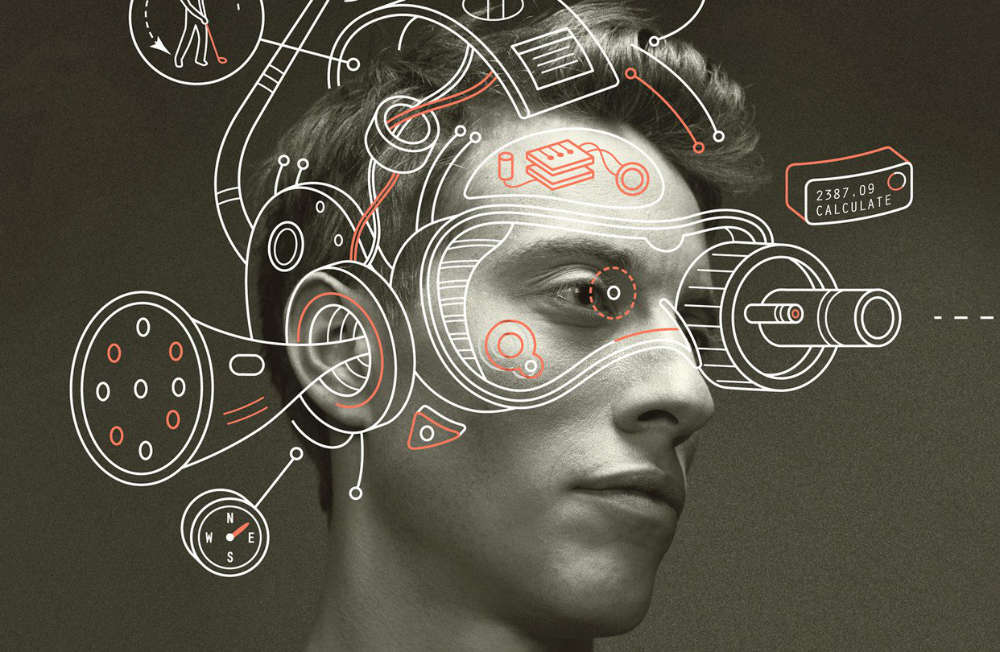The future fight, won’t be like anything humanity has ever seen before. In the not so distant future, machine-humans or humanoids will occupy the battlefield. Artificial Intelligence, AI, is changing the way battles are fought, and creating the hive mind along the way.

The future of warfare will mostly be automated, and each soldier will be connected to an interlinked system were a collective, or AI makes the decisions rather than an individual. A new arms race is brewing in this field, and it’s the field of Artificial Intelligence.
China, Russia, and the United States individually are locked in a heated race to get the latest technology onto the battlefield, previously arms races entailed something much different, but this one – houses mankind’s last invention.
“The arms race is already starting,” said Professor Toby Walsh from UNSW’s School of Computer Science and Engineering.
“It’s not just me but thousands of my colleagues working in the area of robotics … and we’re very worried about the escalation of an arms race,” he said.

There are different types of AI and the one that causes the most concern is Artificial General Intelligence (AGI) which is the intelligence of a machine that could successfully perform any intellectual task that a human being can.
Imagine you’re on a battlefield and you’re wearing a helmet packed with sensors that record your brain’s electrical signals and sends them out for processing at a remote facility. At the facility, a team of military specialists is monitoring your cognitive abilities in real-time, based on an algorithm’s interpretation of your brainwaves. What the team of professionals is looking to uncover is if you, the soldier, are using good or bad judgment, or are you too tired to be driving.
The real-time connectedness between soldier and base is getting a massive upgrade, rather than radio communication – the army can use brain signal detection technology. Meaning that if a soldier makes a bad call, disobeys an order, or is exhausted; the army can rotate that soldier out, and a new one in.
While it may appear as a good thing for our soldiers, it is important to understand where this leads too.
EEG machines, electroencephalography machines, are used to monitor brainwaves. The individual wears the EEG cap, artificial intelligence translates the brain waves, and then finally a specialist interprets the outputted data. But in the not so distant future, the AI would replace the expert, and instead of receiving orders from the command post, rather the soldier would receive orders from the AI.
What this will create is a Hive Mind of sorts; A singular Artificial General Intelligence would make the judgment call, and the soldier will have the end choice of acting upon the intelligence depicted by the AI. However, even further down the rabbit hole, the soldier would not have an opportunity to act upon the decision of the AI, rather the AI would be controlling the human, and that would create the humanoid, this is what many robotics professors are concerned about.
The US Army’s Human Research and Engineering Directorate (HRED), alongside DARPA and IARPA, is directly responsible for the latest technology being placed onto the battlefield. HRED’s primary mission is to improve “Soldier-machine interactions in mission contexts.”
The Human Research and Engineering Directorate (HRED) has the lead for two Army Research Laboratory Major Laboratory Programs (MLPs): Human Dimension and Simulation and Training Technology. Fiscal year 2011 marks the first time the Simulation and Training Technology MLP is part of HRED and coincides with the full realignment of the Simulation and Training Technology Center (STTC) within the Directorate. This realignment brings an exciting new synergy among the U.S. Army’s leading science and technology (S&T) programs in human performance, human factors, simulation, and training technology. – Read More
The Development Process
Currently, an EEG can correctly read a human’s brainwaves. However, an accurate interpretation of what brainwaves mean only comes after the algorithm is trained using a particular person’s brainwave data. Brainwaves are individual, similar to a fingerprint, meaning that each time a different person places on the EEG helmet – the machine has to recalibrate for that character.
The Army’s algorithm is based on “transfer learning,” which grants the AI the ability to take the things an algorithm’s already learned and apply them to a new scenario.
Simply put, it is only a matter of time until the army deciphers, and codes the right algorithm which would allow the Artificial Intelligence to transfer from person to person without re-calibrating. Also, it is only a matter of time until scientists develop the Hive Mind using the same technology. Finally, it is also only a question of time until a government body, or technology institution publicly creates an Artificial General Intelligence capable of performing any intellectual task that a human being can.
Works Cited
JORDAN PEARSON. “The Army Is Testing Brainwave-Reading Technology for Drivers.” Motherboard Vice. . (2017): . .
Nick Whigham. “Robotics scientist warns of terrifying future as world powers embark on AI arms race.” News AU. . (2017): . .














